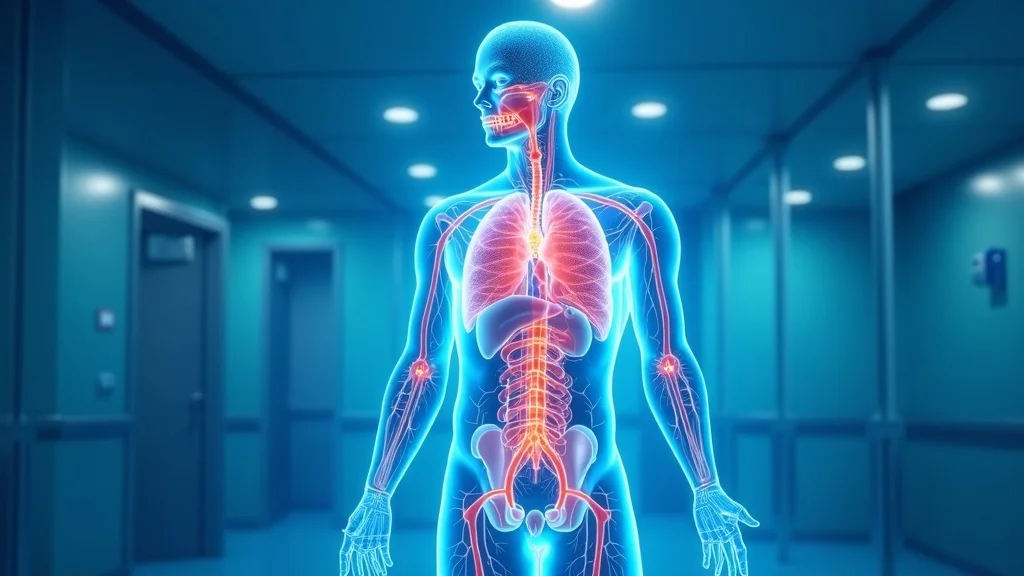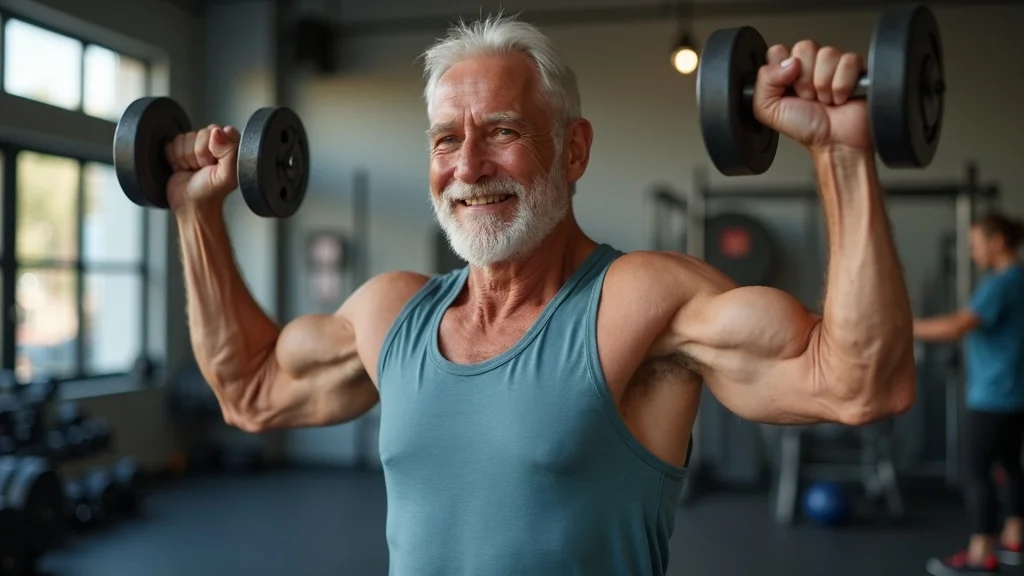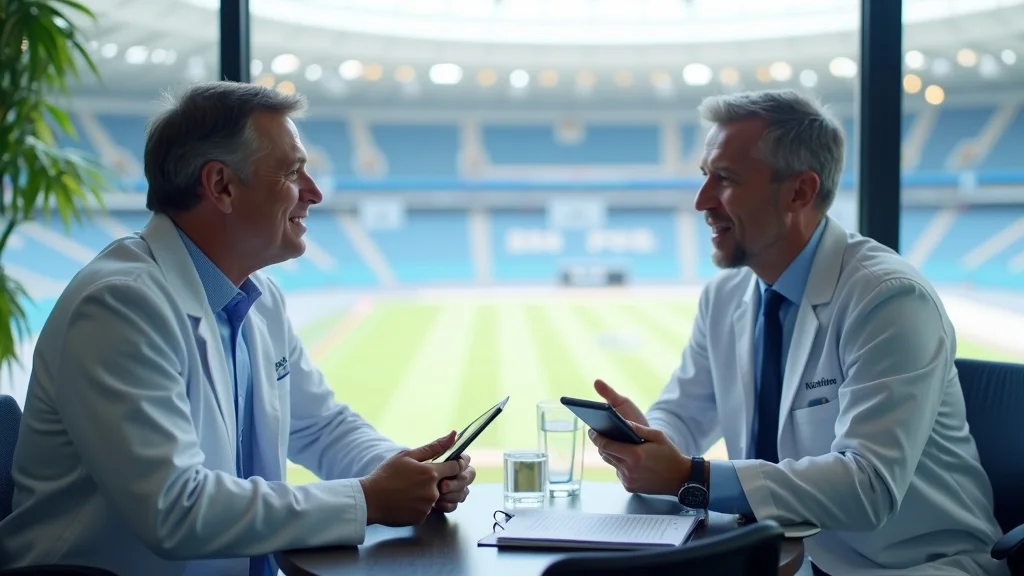Did you know that regular exercise can raise your testosterone levels by up to 30% in just a few weeks? This isn’t just bro science—it's a powerful, scientifically validated reality that affects both men and women. Testosterone is often misunderstood as solely a “men’s hormone,” but its influence reaches far beyond muscle mass and libido. Whether you want to build muscle, sharpen your mind, or rescue your energy, optimizing the relationship between exercise and testosterone is your key to maximum gains and lifelong vitality. Keep reading to discover surprising truths, actionable strategies, and what actually works to boost your hormonal health.
Startling Facts: The Hidden Truths About Exercise and Testosterone
When most people think about testosterone, visions of bodybuilders or elite athletes might come to mind. Yet, the connection between physical activity and testosterone levels is not reserved for the genetically gifted or the young. Recent research consistently reveals that simple changes in your weekly activity, especially resistance exercise, can have a major impact on your serum testosterone—even for aged men or those just starting a fitness journey.
Here’s what science unveils: certain types of workouts—namely compound weightlifting and interval training—stimulate an immediate acute change in testosterone concentrations. But more importantly, habitual participation in physical activity, regardless of age or initial fitness level, transforms these short-term spikes into sustained hormonal improvements. The myth that only men benefit or that you must train like a professional to see effects has been debunked. In reality, optimizing exercise routines plays a role in maintaining and restoring healthy testosterone concentrations, supporting not just muscle growth but also fat mass reduction, emotional stability, and cardiovascular well-being.
‘Testosterone is not just a men’s hormone; it’s foundational to health, strength, and resilience in both men and women.’

What You'll Learn About Exercise and Testosterone
If you’re ready to unlock your full potential, here’s what you can expect from this guide: the latest science on exercise, physical activity, and testosterone; which types of exercise have the greatest impact for men and women; how resistance training truly maximizes your gains; and how to naturally increase your testosterone without myths or marketing hype. Get the data, debunk the myths, and walk away with expert-backed strategies that work—no matter your age or gender.
- The science linking physical activity, exercise and testosterone, and hormonal health
- Which types of exercise most impact testosterone levels in men and women
- How resistance training maximizes gains
- Evidence-based strategies to increase testosterone naturally
- Common testosterone myths clarified
- Expert opinions and research-backed data on optimizing your workouts

Why Testosterone Matters: Men and Women Alike
Testosterone’s impact reaches far beyond what’s visible in the mirror. Not only do healthy testosterone levels shape your ability to build muscle and recover from workouts, but they also fuel your motivation, bolster emotional resilience, and safeguard cognitive sharpness. For men, gradual testosterone decline can chip away at energy, stamina, and even confidence. Meanwhile, women—though producing lower quantities—depend on this hormone for emotional balance, strong bones, and an energized metabolism, especially during and after menopause when the risk of osteoporosis climbs.
Recognizing low testosterone isn't just about looking at numbers. Symptoms such as chronic tiredness, loss of motivation, unexplained weight gain, or mood swings could all be signs that your testosterone production is suboptimal. The good news? Physical activity—tailored to your needs and age—offers a natural, powerful way to keep your hormones balanced and your vitality intact.
Testosterone Levels: More Than Muscle and Libido
Testosterone is a multi-tasker. It plays a role in critical processes well beyond muscle growth or maintaining lean body mass. As research continues to uncover, balanced testosterone:
- Boosts energy, motivation, and cognitive focus
- Strengthens bone health and resilience
- Supports emotional equilibrium and libido
- Enhances metabolic health and endurance
Even modest improvements in testosterone level, regardless of gender, may translate to greater day-to-day vitality. Especially in older men and women after menopause, maintaining optimal testosterone concentrations can mean the difference between feeling fatigued and enjoying active, independent living. This is why targeted exercise and informed lifestyle changes are critical to sustaining wellness at any age.

Serum Testosterone: Understanding the Science
Understanding how serum testosterone behaves in your body clarifies why physical activity is so potent for longevity and health. Serum testosterone refers to the amount of the hormone present in your bloodstream, available to regulate everything from muscle synthesis to mood regulation. Levels fluctuate throughout the day and can be influenced by myriad factors—age, sleep, stress, fat mass, and the type of exercise you do.
Testosterone concentration can drop with sedentary habits, excess fat mass, chronic stress, or inadequate sleep. Conversely, introducing regular resistance exercise or interval training can induce both acute and lasting increases in serum testosterone concentrations, proven across studies involving athletes and non-athletes alike. The right workout, paired with other healthy habits, acts as your first line of defense for keeping low testosterone at bay—and maintaining peak performance across all stages of life.
Testosterone Production and Hormonal Cycles
Testosterone is primarily made in the testes (in men) and ovaries (in women), under tight hormonal regulation by the brain’s hypothalamic-pituitary-gonadal axis. The hormone’s release follows a daily rhythm, peaking in the morning and dipping in the evening. This natural hormonal cycle impacts everything from metabolism to emotional states. Physical activity acts as a signal, telling your glandular system to ramp up production and optimize distribution. Consistent exercise may help offset age-related declines and balance hormonal fluctuations triggered by stress or poor sleep.
Notably, research shows that an acute change in serum testosterone happens particularly after strength training or high-intensity efforts—prompting muscle growth and aiding faster recovery. Over months and years, these acute spikes translate into higher average testosterone concentrations, particularly when exercise routines are sustained and paired with healthy lifestyle choices.
Factors Affecting Serum Testosterone Levels
While exercise is key, several other factors influence testosterone production. Age naturally lowers testosterone levels, starting as early as the thirties. High levels of body fat (especially abdominal fat) can suppress hormone production, while lean muscle mass and regular physical activity support higher concentrations. Chronic stress—by increasing cortisol—can work against testosterone, as does sleep deprivation.
Other variables include diet (micronutrients like zinc and vitamin D are crucial), alcohol intake, and certain medications. Each of these, alone or together, can determine your baseline testosterone level and responsiveness to exercise. The upshot: while your biology determines your potential, your routine choices—including what, when, and how you exercise—ultimately shape your hormonal outcomes.
‘Your biology determines your potential, but your choices shape your outcomes.’

How Physical Activity Modulates Testosterone Levels
Not all types of exercise affect testosterone equally. Studies confirm that resistance exercise—like weightlifting and circuit training—yields the greatest acute and long-term boosts in serum testosterone levels. High-intensity interval training (HIIT) also sparks a moderate increase, though endurance training for prolonged periods may sometimes suppress testosterone, especially if not counterbalanced with proper recovery.
The magic lies in regularity and intensity. Carefully programmed routines, adjusted for age, sex, and baseline fitness level, reliably produce sustainable benefits. This isn’t about maximal effort every day, but about strategic, consistent physical activity—moving your body with purpose, challenging your muscles, and allowing ample time for rest and repair.
Resistance Exercise and Testosterone Response
Resistance training is the gold standard for those seeking to increase testosterone naturally. Engaging large muscle groups—think squats, deadlifts, or push-ups—stimulates robust hormone release, promoting muscle mass retention (including for aged men and women), bone strength, and fat loss. Progressive overload (gradually increasing resistance or volume) further amplifies these effects.
Not only does this approach induce a significant acute change in testosterone concentrations immediately post-exercise, but over time, it restores or maintains higher baseline levels. These responses have been validated across populations, from beginners to elite athletes and older men aiming to regain vitality. To build muscle and maintain a youthful hormonal profile, prioritize resistance exercise 2-4 times per week.
- Weightlifting
- Compound multi-joint movements
- Circuit-style resistance exercise
- Bodyweight routines

The Role of Interval Training and Endurance Workouts
High-intensity interval training (HIIT) blends short bursts of maximal effort with periods of recovery. This style of interval training not only builds cardiovascular fitness but also promotes favorable shifts in testosterone level, especially for those already engaging in resistance work. While the acute spike in testosterone is notable, sustaining those increases depends on program consistency and balanced rest.
Endurance (aerobic) exercise, such as long-distance running or cycling, offers marked health benefits—heart health, fat regulation, and mental clarity—but can, in rare cases, blunt testosterone concentrations if overdone or combined with inadequate nutrition. Striking the right balance between resistance training, HIIT, and steady-state cardio ensures you’re maximizing both immediate and long-term hormonal health.
| Type of Exercise | Acute Testosterone Response | Long-Term Effect |
|---|---|---|
| Resistance Training | High | Sustained |
| High-Intensity Interval Training (HIIT) | Moderate to High | Moderate |
| Endurance Training | Variable | May Decrease |

Types of Exercise: What Science Says About Boosting Testosterone
The key takeaway from hormonal research is this: Not all exercise is created equal when it comes to testosterone. Resistance training remains the best-documented way to boost testosterone and optimize body composition, but combining multiple modalities—like circuit-based routines that incorporate HIIT and periodic aerobic (cardio) work—delivers the most holistic health benefits.
For those at different life stages—including aged men and women after menopause—the type, frequency, and recovery of exercise matter greatly. Working with a healthcare professional or personal trainer can help you tailor a routine to your fitness level and hormonal needs. Adapt as you age, but remember: regular movement always trumps perfection.
Comparing Resistance Training, Cardio & Mixed Modalities
Resistance training comes out on top for sustaining both anabolic (muscle-building) and actual hormonal benefits. Heavier weights with proper form, performed 2-4 times per week, consistently increase testosterone more than moderate aerobic exercise. Cardio alone—while excellent for cardiovascular and metabolic health—does not stimulate testosterone production to the same extent. Optimal plans often include both: foundational strength sessions and supplemental, moderate aerobic work.
Meanwhile, mixed-modality routines, such as CrossFit or circuit bootcamps, combine the best elements: muscle overload and metabolic demand. Elite athletes and recreational exercisers alike benefit when strength training is the program’s backbone, with aerobic exercise and HIIT playing supportive roles for overall well-being.
Why Resistance Training Is Key for Increase Testosterone
Research shows that heavy and moderate resistance produces higher acute increases in serum testosterone concentrations than lighter weights or longer, lower-intensity sessions. For older men and women, prioritizing strength helps combat not just low testosterone but also age-related muscle and bone loss. Training frequency (2-4 sessions weekly), ensuring recovery between workouts, and gradually increasing load are crucial for everyone—including those new to exercise.
Women especially benefit from strength work, as moderate increases in testosterone support mood, energy, and bone density. The myth that weightlifting makes women “bulky” is unfounded—rather, it promotes lean muscle mass and metabolic efficiency. Regardless of age or gender, the science is clear: resistance training is your most effective, sustainable strategy for naturally increasing testosterone and feeling your best.
- Heavy vs moderate weights
- Training frequency and recovery
- Tailoring workouts by age (including aged men)
- Impact on women’s testosterone levels

Expert Opinions: How to Naturally Increase Testosterone
Medical experts agree: the best way to sustainably increase testosterone isn’t with shortcuts or questionable supplements, but with smart, regular physical activity. According to leading endocrinologists and athletic coaches, habits such as quality sleep, strategic strength training, stress management, and a nutrient-rich diet are paramount. These practices don’t simply create temporary shifts—they promote a lasting, healthy hormonal balance.
Consistency trumps intensity. Rather than occasional extreme workouts, focus on regular, moderate routines that fit your experience and lifestyle. Periodically reevaluate your program: are you sleeping enough, recovering between sessions, and eating foods that support hormone production (lean proteins, healthy fats, and ample micronutrients)? Aim for progress, not perfection, to ensure testosterone levels remain in the healthy range for your stage of life.
‘Consistency in your physical activity is more important than intensity for long-term testosterone benefits.’ – Dr. Elaine Foster, Endocrinologist

Common Testosterone Myths: Separating Fact from Fiction
There’s no shortage of myths clouding the conversations around exercise and testosterone. For starters, testosterone is not just for men—women rely on it for strength, mood, and overall vitality. Cardio does not inherently decrease testosterone; it’s about how you balance different types of exercise and manage recovery. Supplements never replace the foundational role of exercise. With smart, regular movement, even aged men or postmenopausal women can see meaningful improvements in hormone levels—debunking the myth that age is a limiter.
- Myth: Only men need to increase testosterone
- Myth: Cardio decreases testosterone
- Myth: Supplements can replace exercise
- Myth: Aged men can’t improve testosterone levels
The bottom line: Science supports that diverse exercise routines and a balanced lifestyle are the best ways to optimize your testosterone production and experience meaningful health benefits—regardless of age or gender.
People Also Ask: Essential Questions About Exercise and Testosterone
Does exercising increase testosterone?
Numerous studies confirm that both acute and long-term physical activity boosts serum testosterone, especially after resistance training. Factors like age, sex, workout type, and duration influence the result.
Do gym guys have high testosterone?
Individuals who regularly participate in resistance training or intense physical activity often show higher baseline testosterone levels compared to sedentary individuals, but genetics and lifestyle matter too.
Does not ejaculating for 7 days increase testosterone?
Research is mixed, with minor acute changes noted in some studies, but no consistent evidence that abstaining from ejaculation for 7 days significantly raises baseline testosterone levels long-term.
How can I raise my testosterone levels fast?
Engaging in resistance training, optimizing sleep, managing stress, and ensuring a diet rich in micronutrients are the fastest, most evidence-supported ways to promote healthy testosterone levels naturally.
How Exercise and Testosterone Impact Long-Term Wellness
Investing in your physical activity goes well beyond short-term muscle gains. Regular exercise—especially strength and interval training—offers protection against osteoporosis (vitally important for post-menopausal women), improves mood and cognition, and dramatically supports cardiovascular and metabolic health. Sustaining healthy testosterone levels through these activities can decrease the gradual, age-related decline experienced by both aged men and women, helping you stay vibrant, independent, and energetic well into your later years.
- Reduced risk of osteoporosis (especially post-menopause women)
- Enhanced mood and motivation
- Improved metabolic and cardiovascular health
- Decreased age-related decline in aged men and women

FAQs: Exercise and Testosterone
-
Which exercises increase testosterone levels the most?
Compound resistance movements (squats, deadlifts, bench presses) and HIIT are shown to have the highest impact on acute testosterone response and long-term gains. -
What are normal testosterone levels for men and women?
For men, normal serum testosterone ranges from about 300-1,000 ng/dL, while for women, it's typically between 15-70 ng/dL. Age, time of day, and health factors can influence results. -
Can too much exercise lower testosterone?
Yes. Excessive endurance exercise or inadequate recovery can suppress testosterone production. Balanced routines and proper rest are crucial for hormonal health. -
Is it safe to use supplements to increase testosterone?
Consult your healthcare provider. While some natural supplements may help, focusing on exercise, sleep, and diet remains safest and most effective for most people.

Key Takeaways: Maximizing the Relationship Between Exercise and Testosterone
- Strategize with resistance exercise for optimal testosterone gains
- Monitor testosterone level and adjust routines for age and gender
- Support hormonal balance with nutrition, rest, and stress management
- Long-term, sustainable physical activity boosts vitality in men and women alike

Final Thoughts: Cultivating Consistent Gains with Exercise and Testosterone
‘Exercise and testosterone are not just about athleticism — they’re the blueprint for a vibrant, resilient life.’
Integrate resistance sessions, support your rest, and nourish your body—your hormones (and future self) will thank you.
Ready to Optimize? Discover Our Top-Recommended Supplements for Exercise and Testosterone
💧 Want to feel the difference absorption makes? See the supplements we recommend for maximum impact — and why liquids, nano-drops, and quantum strips work better.👉 Discover Our Top Picks →
 Add Row
Add Row  Add
Add 




Write A Comment